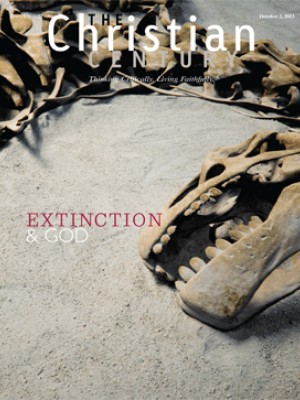Sunday, October 13, 2013: 2 Kings 5:1-3, 7-15c
Back in the mid-1990s I wrote a book on sin. Each of us knows sin experientially, of course, but few of us know it comprehensively even in that way because we are parochial even in our sinning. So I had to study sin. For a couple of years I read about sin in the Bible. I read commentaries on the Bible, theological encyclopedia articles and books on virtue and vice. I finally got so stuffed with sin that I had to write it out just to get relief.
I learned that it’s almost impossible to tell exactly how blameworthy others are for their sins, but that I dishonor them as moral adults if I assume they are not responsible at all. I learned that the worst hypocrisy is unconscious of itself. Beginning hypocrites and recovering hypocrites know they are false, but a deep-dish hypocrite thinks he is sound. I learned that we haven’t seen the heart of darkness until we’ve seen religious sin.
Read our latest issue or browse back issues.
But the most important truth I learned is that sin is inexplicable. In the mystery of iniquity we human beings often know what is wrong and then do it. Further, we know that wrongdoing grieves God, harms others and abuses ourselves, yet we still do it. Why? Why would we live against people who love us? Why would we be willing to grieve our Creator and Savior? Why, like an alcoholic, would we recognize our poison and still drink it?
Apostle Paul knew all about the mystery of iniquity (“I do the very thing that I hate”) and did not try to solve it. He just roared, “Wretched man that I am!” and then declared again and again that there is only one rescue from it. The sinner has to die. His old self, with its angers, lusts and neglects, has to die, and his new self, with its compassion, gratitude and love, has to arise like Jesus walking out of his tomb.
So in Romans 6, for instance, and in Colossians 2 and 3 Paul expounds this greatest “dynamic” of the Christian life. Of course, there are other dynamics in the New Testament, other ways to describe Christian life, such as following Jesus, sowing to the Spirit and striving first for the kingdom of God. But the greatest dynamic yokes us directly to Jesus’ death and resurrection.
The key to it is that Jesus did not die and rise alone; we died and rose with him. When Jesus walked to the cross we walked with him. When Jesus moved out of Joseph’s tomb with the moss of death still clinging to him, we moved out with him just because Jesus is the second Adam, the head of the new race. Where the head goes so goes the rest of the body.
“Were you there when they crucified my Lord?” “Were you there when God raised him from the tomb?” A blessed, God-almighty, Holy Ghost yes!
You could put this truth another way. God always sees believers inside Christ. God doesn’t see me just as Neal, son of Case and Lettie. God sees me as Neal in Christ. God sees Sarah in Christ, Mike in Christ, Helen in Christ. That’s why if you sign a note “in Christ” you might mean more than you think.
In baptism, says Paul, we die and rise with Christ a second time. We’re like the children of Israel going down into the Red Sea and coming up on the other side. Baptism means going down into death and coming up into life. Although I’m in a denomination that sprinkles, I know that immersion is a far better symbol of dying and rising. Sprinkling is an appetizer. For a baptism I need to get underwater. (And yes, infants can be immersed. Greek Orthodox do baptism routinely.)
Since we’ve been raised with Christ we need to keep the rhythm going. Let resentment die and forgiveness arise. Let malice die and love arise. Let greed die and gratitude arise. Paul probably didn’t write 2 Timothy. But the author knew Paul’s teaching and could state matter-of-factly that “if we have died with him we will also live with him” (Col. 2:11, ESV).
The author of 2 Kings 5 may not have understood the meaning of dying and rising with Jesus Christ. But he knew that unless Naaman drowned his arrogance in the Jordan River—after following the advice of his servant—there was no way he could arise in humility to a clean new life.
We died and rose with Christ when he did. We did it again in our baptism. We do it again and again when we mortify our old self and vivify our new one. All these dyings and risings are rehearsal for when the shadows lengthen and evening comes, and we close our eyes for the last time. One day we will physically die, but for Christians who die into the heart of God, death will be nothing new. We’ve been practicing dying and rising all our lives.





